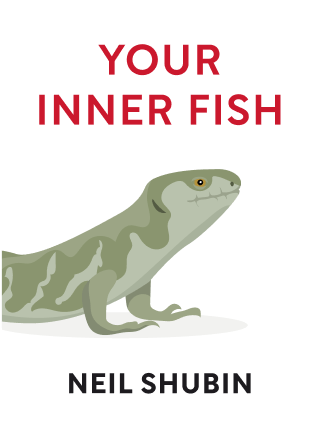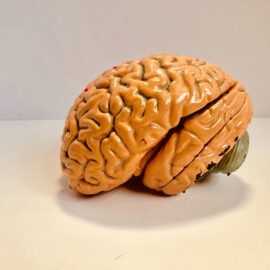

This article is an excerpt from the Shortform book guide to "Your Inner Fish" by Neil Shubin. Shortform has the world's best summaries and analyses of books you should be reading.
Like this article? Sign up for a free trial here .
How does the human ear work? How did the human sense of hearing develop over time?
The human ear has a long history and comes from many years of evolution. We can also trace our hearing and the hearing of other animals back to common ancestors.
Read on to answer the question “how does the human ear work” and more.
How Does The Human Ear Work? Genetic Origins
How does the human ear work? The answer might be in our genes. Genes also reveal the ear’s long history. A gene known as Pax 2 directs inner ear formation in mice and humans. (Mice that have a mutated version have malformed inner ears.) It’s also active in fish neuromasts—pointing to a common gene shared by fish and humans.
The Origins of Eyes and Ears
Further, genetic evidence suggests our eyes and ears have a common history and helps answer the question “how does the human ear work?”
There is a link between the Pax 2 gene for ear formation and the Pax 6 gene described in Chapter 9 for eye formation. The gene that forms eyes in box jellyfish (they can have more than 20 eyes all over their body) appears to incorporate aspects of both Pax 2 and Pax 6.
Thus, the major genes dictating the formation of our eyes and ears correspond to a single gene in a primitive creature. This may help explain why many human birth defects affect both the eyes and the inner ear.
How Does Human Hearing Work?
Now that you know the answer to the question “how does the human ear work?” you can also answer the question “how does human hearing work?” The inner workings of the human ear function like a Rube Goldberg machine. However, this chapter explains that while our ears are complex, parts evolved from simpler creatures: reptiles, fish, and sharks (remember gill arches?).
The ear doesn’t look like much from the outside, but the outer appearance belies its complexity. There are three parts: the external ear, the middle ear with three ear bones, and the inner ear made up of nerves, tissue, and gel. While the external ear is a late evolutionary development (the flap is found only in mammals), the middle and inner parts have antecedents in the bone structure of sharks.
How the Ear Works
So how does the human ear work? In simple terms, the ear works like this:
- Soundwaves are drawn into the outside cartilage flap, or external ear.
- They travel into the middle ear and rattle the eardrum.
- Three small bones attached to the eardrum also shake. One bone is attached to a snail-like bone with a kind of plunger.
- The plunger goes up and down, moving around the gel in the snail-like structure.
- The moving gel triggers nerves, which send a signal to the brain. The brain interprets it as sound.
So how does the human ear work? Now you have basic knowledge of how human hearing works and where it came from.

———End of Preview———
Like what you just read? Read the rest of the world's best book summary and analysis of Neil Shubin's "Your Inner Fish" at Shortform .
Here's what you'll find in our full Your Inner Fish summary :
- How your hands and feet are like a fish that lived hundreds of millions of years ago
- How the structure of your head can be traced back to an ancient, headless worms
- What parts of your body are uniquely human






